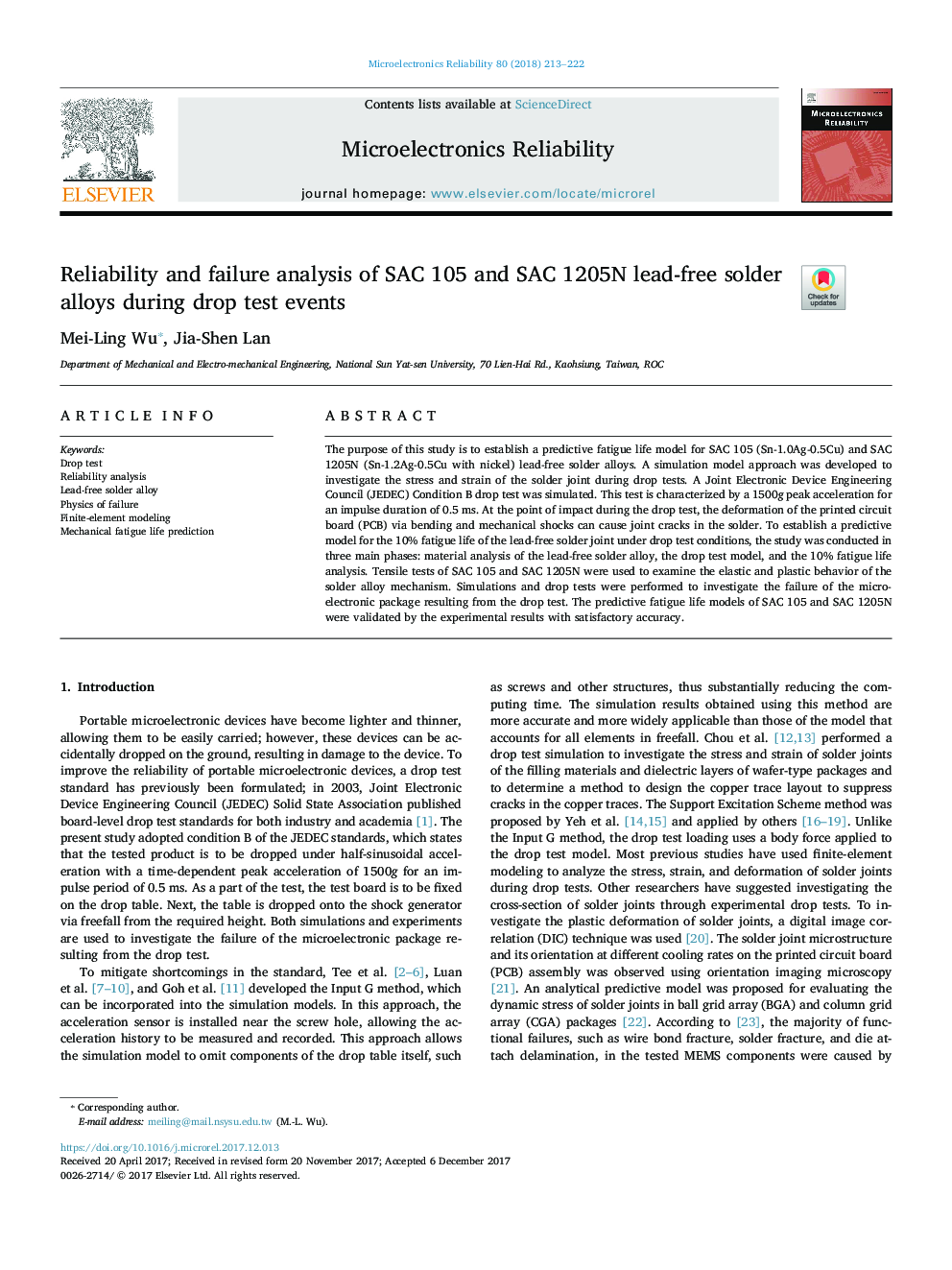| Article ID | Journal | Published Year | Pages | File Type |
|---|---|---|---|---|
| 6945990 | Microelectronics Reliability | 2018 | 10 Pages |
Abstract
The purpose of this study is to establish a predictive fatigue life model for SAC 105 (Sn-1.0Ag-0.5Cu) and SAC 1205N (Sn-1.2Ag-0.5Cu with nickel) lead-free solder alloys. A simulation model approach was developed to investigate the stress and strain of the solder joint during drop tests. A Joint Electronic Device Engineering Council (JEDEC) Condition B drop test was simulated. This test is characterized by a 1500g peak acceleration for an impulse duration of 0.5Â ms. At the point of impact during the drop test, the deformation of the printed circuit board (PCB) via bending and mechanical shocks can cause joint cracks in the solder. To establish a predictive model for the 10% fatigue life of the lead-free solder joint under drop test conditions, the study was conducted in three main phases: material analysis of the lead-free solder alloy, the drop test model, and the 10% fatigue life analysis. Tensile tests of SAC 105 and SAC 1205N were used to examine the elastic and plastic behavior of the solder alloy mechanism. Simulations and drop tests were performed to investigate the failure of the microelectronic package resulting from the drop test. The predictive fatigue life models of SAC 105 and SAC 1205N were validated by the experimental results with satisfactory accuracy.
Keywords
Related Topics
Physical Sciences and Engineering
Computer Science
Hardware and Architecture
Authors
Mei-Ling Wu, Jia-Shen Lan,
